
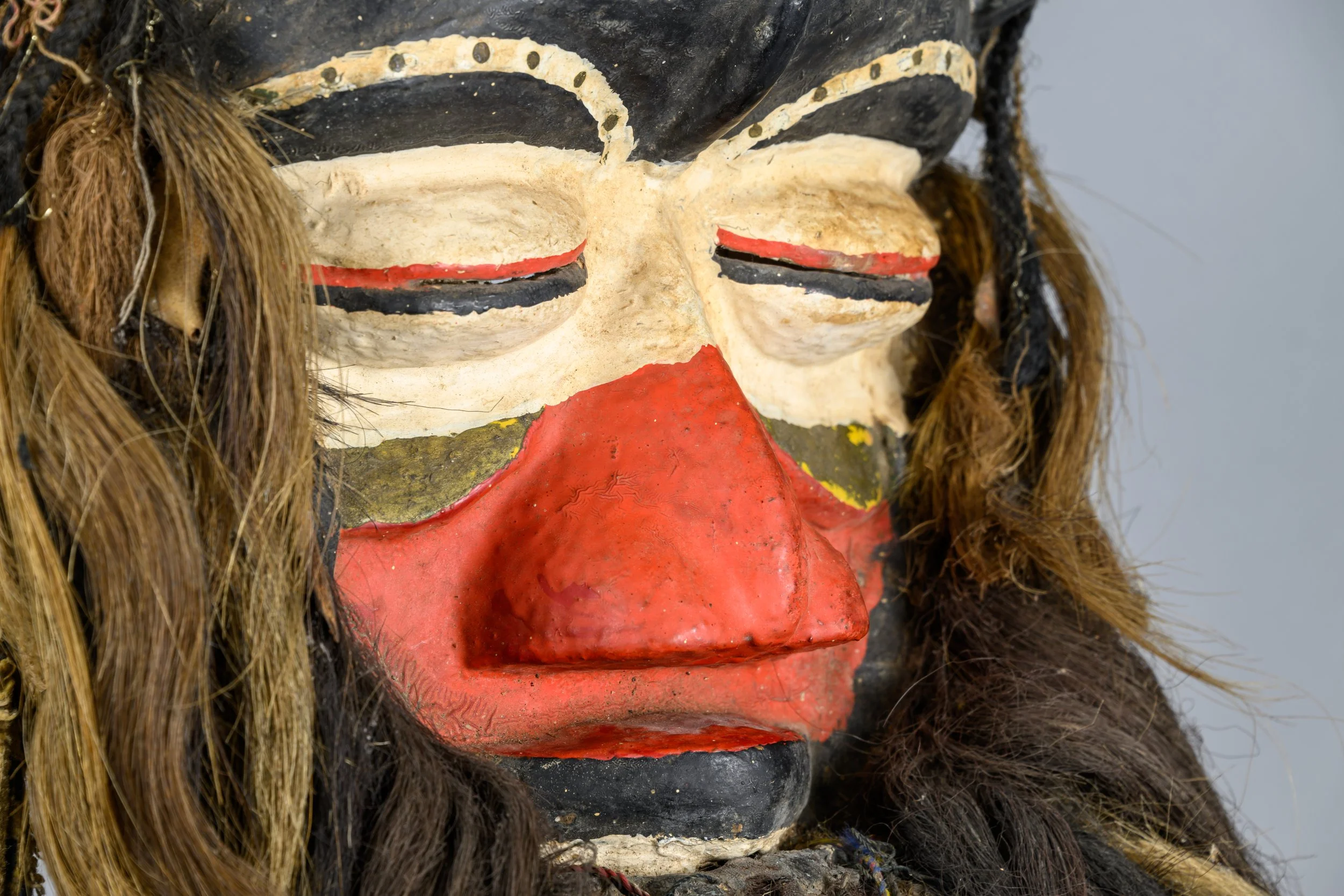
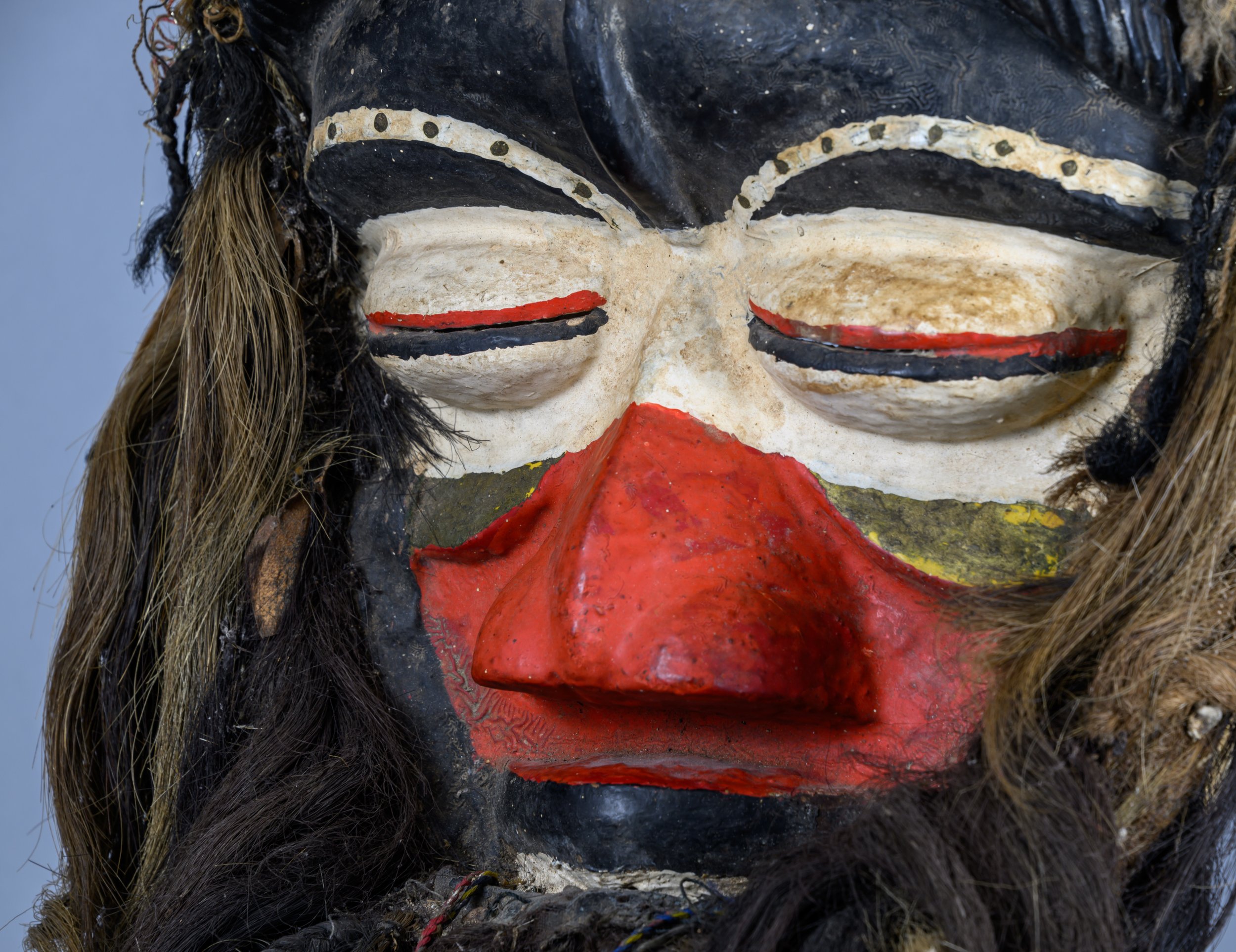

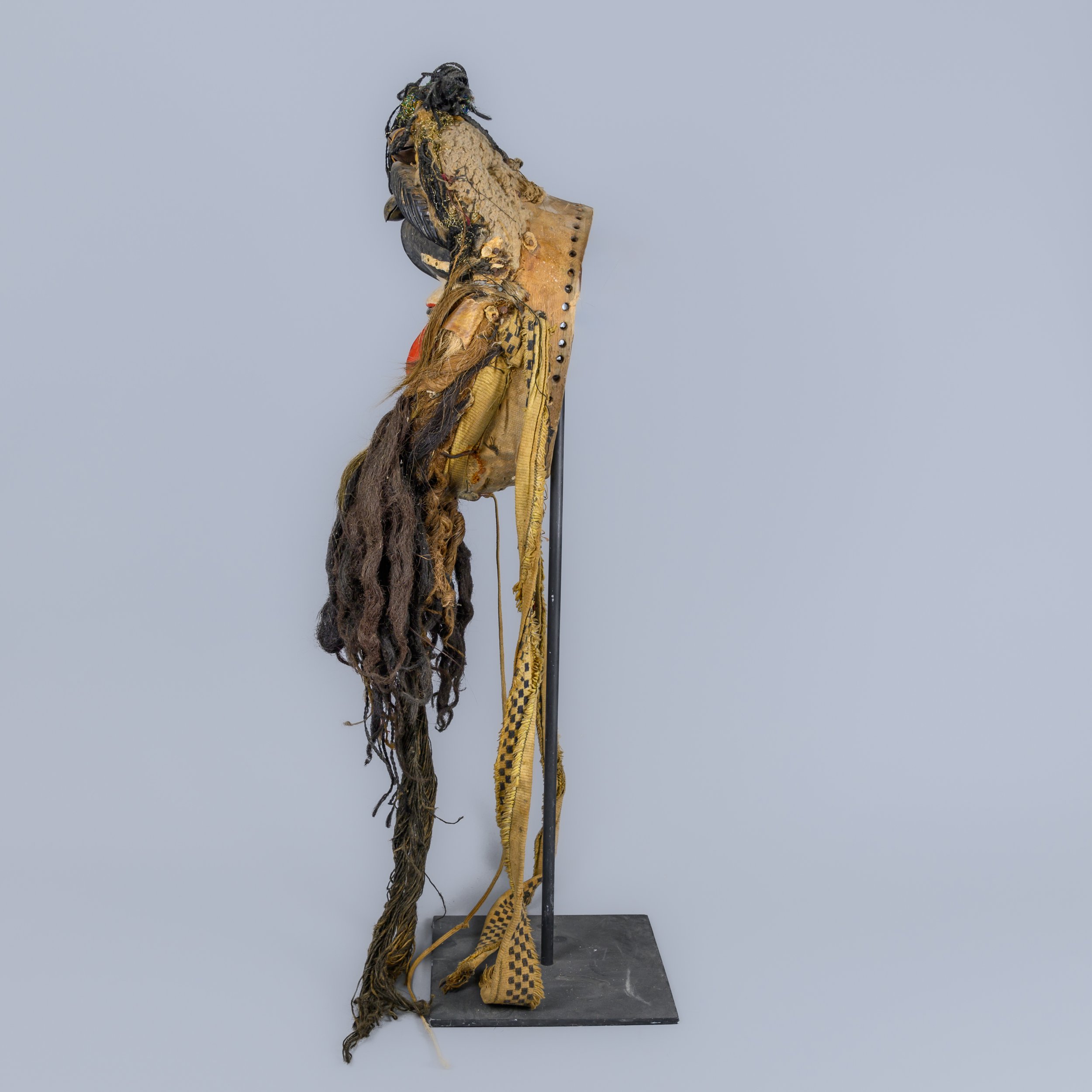
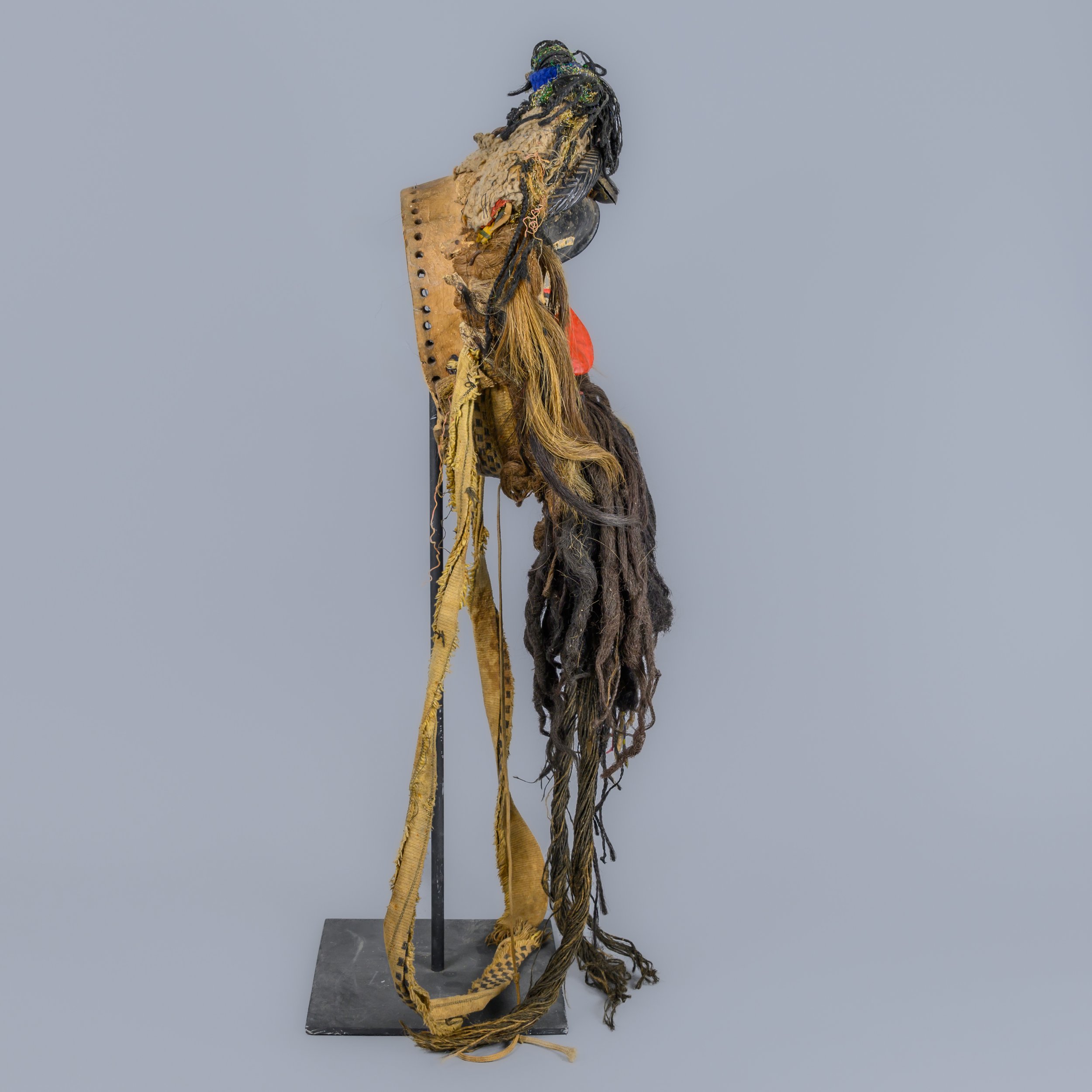



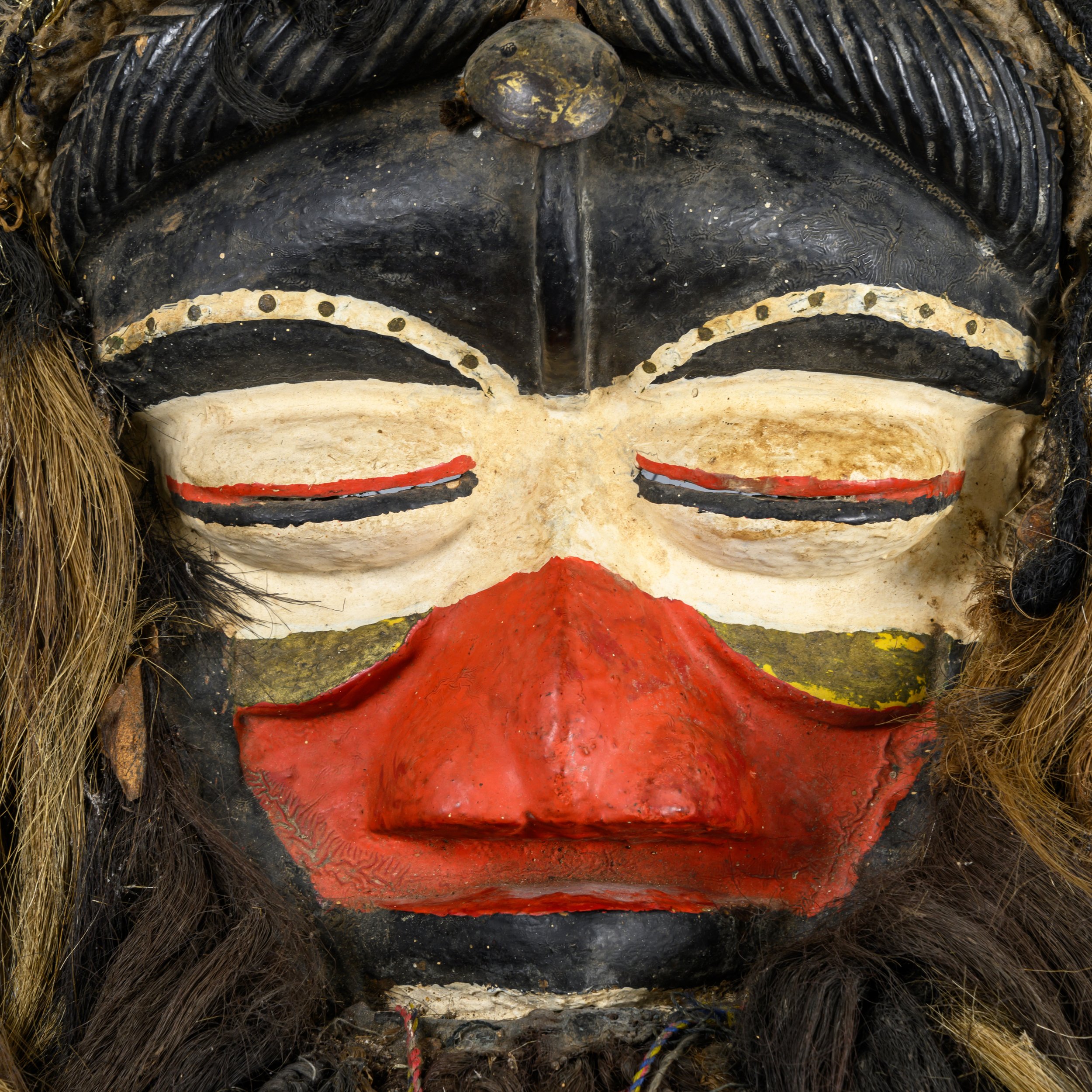

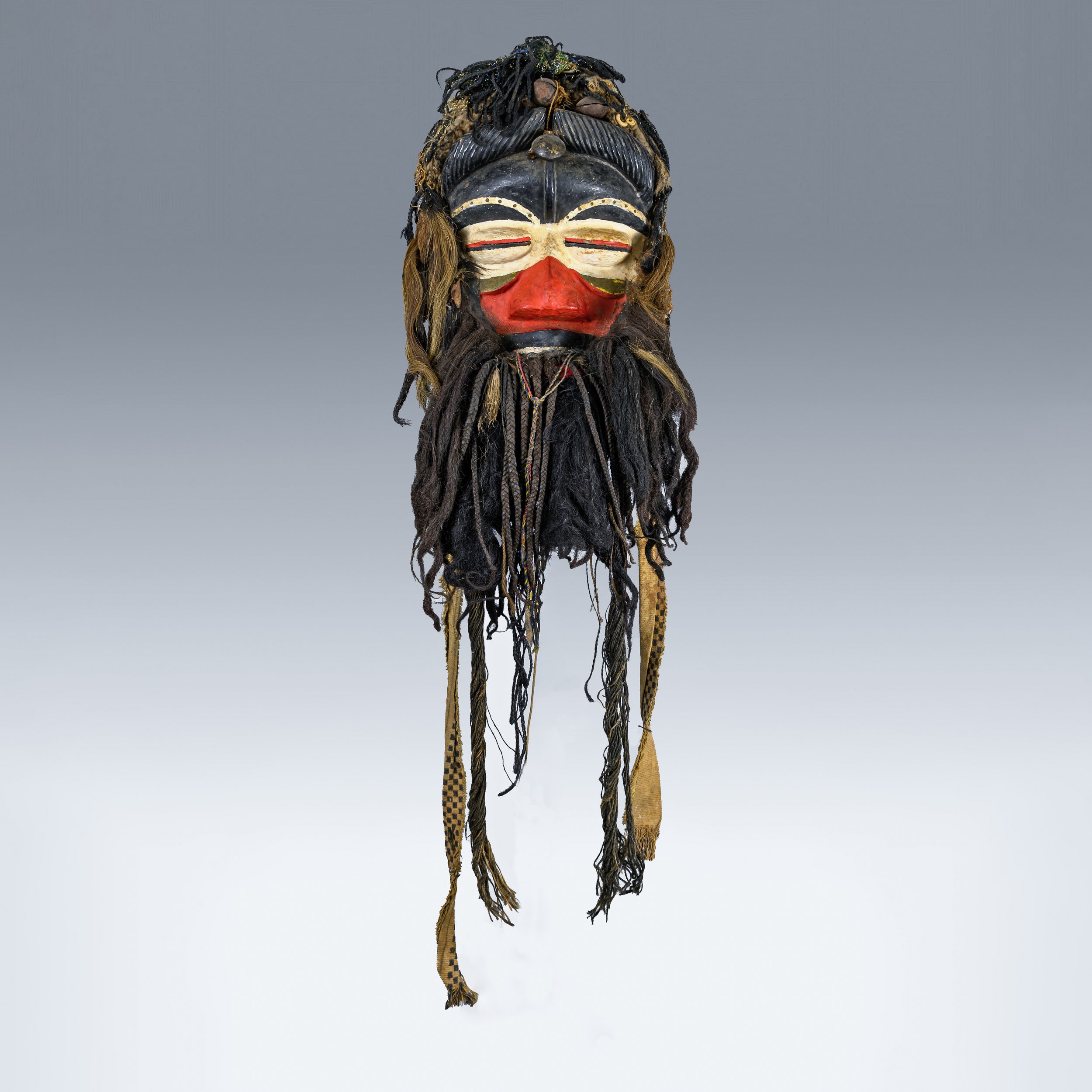
Wè/Guéré or Wobé, Zro Gla (Beggars) mask
14in x 11.5in (mask only) 42” total with attachments
35.6cm by 29.2cm (mask only) - 106.7cm total with attachments
wood, hair, cloth, bells, plastic, string, tinsel, nails, polychrome
collection of Chris Doane, CO
A really fantastic mask with a lot of character, and it has a great presence in a room. I have always been drawn to this kind of mask, and this is definitely one of my favorites.
The masking society amongst the Wè is called Gla. The Wè explain the arrival of Gla in their villages as the result of an encounter between a founding lineage ancestor and a spirit of the bush, the untamed forest that is both spiritually charged and chaotic. Wè masks take a variety of forms, each well established with readily identifiable attributes, rankings, and functions. They range from hierarchically minor masks representing beggars, comedians, singers, and dancers to masks that are in charge of maintaining order to the singular great mask of wisdom, the mask judge. There are only very rare circumstances where a woman can wear a mask, and predominately masks are always worn by initiated men. Predominately masks are always worn by initiated men and there are only very rare circumstances where a woman can wear a mask. A rule relating to masks among the Wè is that no woman may see a mask unworn and without its ritual attire. This conditional rule extends to a total ban on viewing the mask at all in the case of some great masks, formerly under penalty of death. Women are expected to abstain from looking at a mask that is not being danced, for doing so can cause sterility. Women are generally not involved in questions relating to the masks and they frequently hide their faces between their hands when one is near.
The beggar mask, widely known among the Wè as zro gla, is the most frequently occurring Wè mask. It is a "young" mask reflecting the status of the individual wearing it and it is the lowest grade in the mask society, intended for the most recently admitted members. Its wearer has typically had a revelation of it, generally in a dream, and seeks out the main dignitary, the gla zo, of the masking society to seek permission to become a mask wearer. Having obtained this and successfully passed through the initiatory process, the novice and the gla zo decide on the specifics of the mask's manufacture. The task of creating the mask is then given to a sculptor.
Despite their initial appearance, a lot of these masks are feminine masks but always worn by men. The eyes are often covered in white paint, a reference to the manner in which Wè women whiten their eyelids with kaolin on festive occasions. They are rendered in lively colors, this one with a black forehead bearing a vertical stripe, reminiscent of the facial tattooing formerly practiced by the Wè. Though these are all feminine attributes, these masks often have a large black beard made of cow tails and other types of hair. The coiffure on this mask is adorned with bells, colored cotton yarn and colorful tinsel-like strands. The costume for the mask normally consisted of a hooded cape of local manufacture and a long fiber skirt extending to the ankles.
This type of mask is often seen in multiples at village events. Their hips swaying suggestively, the masks approach the assistants, usually women, amusing them with their mimicry and holding their hands out to receive small gifts. The reason these masks are "pretty" is so they will not frighten women and children. Above and beyond the explanations given by villagers for the meaning of this mask, it is possible that its feminine countenance is a reminder of the primordial "mother mask," often seen reproduced on miniature maskettes, five to eight centimeters long, that initiates carry with them on trips so that the ancestor sprit can continue to protect them while they travel. Invocations and offerings are made to these replicas in order to ensure their powers. Although this role appears far from that of the beggar mask, it is often expressed that this is the oldest type of mask and the first to have appeared in its current form. This association is even more surprising since it is only a "minor" mask, that is to say one that is worn by a young person, still far from assuming the responsibilities that age and wisdom bring. But as it ages and if it becomes one of a lineage's oldest masks, it can transform and become a "great" mask, one grade at a time.
References: Masks of the We in Western Côte d’Ivoire by Marie-Noël Verger-Fèvre
$2,000 plus shipping
*The mask is not sold with the display stand shown in the photos. It doesn’t work to display the mask properly and was only used for taking photos.
Click/Tap on any image below to bring up the image viewer.
INQUIRE
If you have questions, requests for high resolution photos, or would like to inquire about purchasing this object please use this form.







